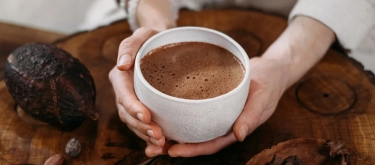Matcha: Taste, Uses, Benefits and Harm
Matcha, a finely ground powder made from specially grown green tea leaves, is renowned for its unique, rich flavor and vibrant green color. Originating from Japan, matcha is traditionally used in Japanese tea ceremonies but has gained global popularity for its health benefits and versatility in both sweet and savory dishes. This article explores matcha’s distinct flavor profile, culinary applications, health benefits, and tips for choosing and using it.

Primary Flavor Characteristics
Matcha has a complex flavor profile that combines sweetness, umami, bitterness, and grassy notes. The taste varies depending on the quality of the matcha; high-quality ceremonial grade matcha is smoother, with more pronounced sweetness and umami, while culinary grade matcha tends to be stronger and slightly more bitter.
Aromatic and Taste Nuances
The aroma of matcha is fresh, grassy, and slightly floral. When prepared traditionally, it has a rich, creamy texture with a lasting aftertaste that combines umami depth with a subtle sweetness. Matcha’s bitterness adds a balanced complexity, making it ideal for both sipping and cooking.
Scientific Description of Taste and Aroma
- Aroma: Fresh, grassy, and faintly floral.
- Taste: A blend of sweet, umami, and slightly bitter flavors with grassy undertones.
- Texture: Creamy and smooth when whisked with water or milk.
In-Depth Flavor Analysis of Matcha
Underlying Flavor Notes
Matcha’s flavor is multi-dimensional, with several layers:
- Umami Depth: The rich, savory note is a key feature, especially in high-grade matcha, adding a deep, satisfying quality.
- Grassy Freshness: The chlorophyll in matcha gives it a green, herbaceous flavor that’s earthy and refreshing.
- Mild Bitterness: A balanced bitterness adds complexity, most notable in culinary-grade matcha.
- Sweet Undertones: High-quality matcha has a slight natural sweetness that enhances its overall flavor profile.
Impact of Quality on Flavor
- Ceremonial Grade: Sweet, rich, with a prominent umami profile and minimal bitterness, making it ideal for traditional tea.
- Culinary Grade: Stronger grassy notes, slightly more bitter, suitable for blending into recipes where matcha is combined with other ingredients.
Textural Qualities
When prepared, matcha has a smooth, creamy texture that creates a velvety mouthfeel, particularly when whisked. Its fine powdery consistency helps it blend well into beverages, baked goods, and savory dishes.
Culinary Uses of Matcha
Primary Uses
- Traditional Tea Preparation: Ceremonial-grade matcha is prepared with a bamboo whisk in hot water, creating a frothy, vibrant green tea.
- Lattes and Smoothies: Matcha adds a creamy, earthy flavor to lattes, blended with milk, or used in smoothies for a healthy, flavorful boost.
- Baked Goods and Desserts: Matcha is popular in cakes, cookies, and ice creams, adding a rich color and unique flavor profile.
- Savory Dishes: Matcha’s umami notes make it suitable for sauces, dressings, and marinades, often adding depth to noodle dishes and soups.
- Cocktails and Mocktails: The bright color and nuanced flavor of matcha make it an interesting ingredient in creative beverages.
Ideal Pairings for Matcha
- Sweeteners: Honey, vanilla, and white chocolate balance matcha’s bitterness in desserts and drinks.
- Milk and Cream: The creaminess of dairy or plant milk enhances matcha’s smooth texture and rounds out its grassy taste.
- Citrus Fruits: Lemon and lime add brightness and contrast matcha’s earthy notes.
- Red Bean (Azuki): A traditional pairing in Japanese cuisine, adding a sweet and earthy contrast to matcha.
- Berries: Strawberries and blueberries add a fruity sweetness that complements matcha’s green flavor.
Health Benefits of Matcha
Key Nutrients and Benefits
- High in Antioxidants: Matcha is rich in catechins, particularly EGCG, which may help reduce inflammation and protect cells from oxidative damage.
- Energy and Focus: Matcha contains caffeine and L-theanine, an amino acid that promotes relaxation and focus, providing calm, sustained energy.
- Chlorophyll: The vibrant green color comes from chlorophyll, which helps in detoxification and supports skin health.
- Vitamin C and Minerals: Matcha contains vitamin C, potassium, and magnesium, supporting immune health and overall well-being.
- Supports Metabolism: Some studies suggest that matcha can support healthy metabolism and fat oxidation, making it popular among health-conscious individuals.
Potential Precautions
- Caffeine Sensitivity: Matcha contains caffeine, so those sensitive to it may want to consume smaller amounts.
- Oxalates: Matcha is high in oxalates, which can contribute to kidney stones if consumed in large amounts.

Tips for Choosing and Storing Matcha
How to Choose Quality Matcha
- Color: High-quality matcha is bright, vibrant green, indicating freshness and high chlorophyll content.
- Texture: A fine, silky powder that’s not clumpy or coarse is a sign of good quality.
- Packaging: Matcha should be stored in airtight, opaque containers to prevent exposure to light and air, which can degrade its flavor.
Storage Recommendations
- Refrigeration: Store matcha in the refrigerator to maintain freshness, especially if it’s a large quantity that won’t be used quickly.
- Airtight Containers: Keep matcha in an airtight container to prevent moisture absorption and preserve its color and flavor.
Fun Facts About Matcha
- Ceremonial Heritage: Matcha is integral to the Japanese tea ceremony, which emphasizes mindfulness and appreciation of the present moment.
- Higher Antioxidants: Due to the entire leaf being consumed, matcha provides higher antioxidant levels than steeped green tea.
- Labor-Intensive Production: Producing high-quality matcha involves shading, hand-picking, and stone-grinding the leaves, contributing to its unique flavor and high value.









